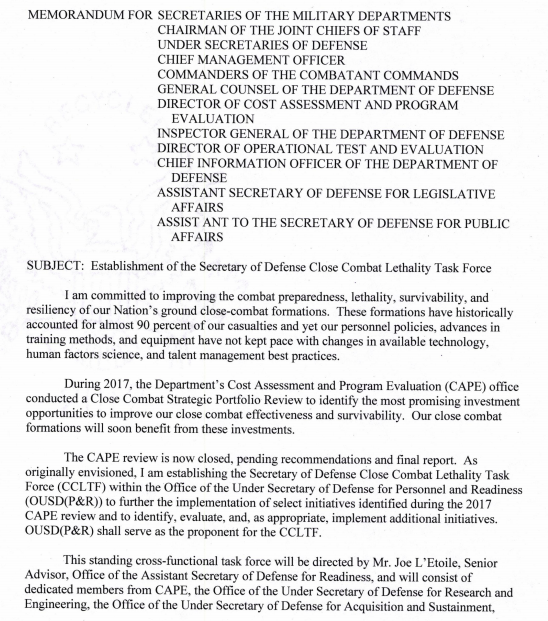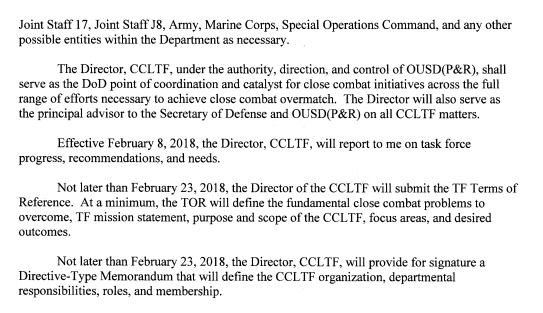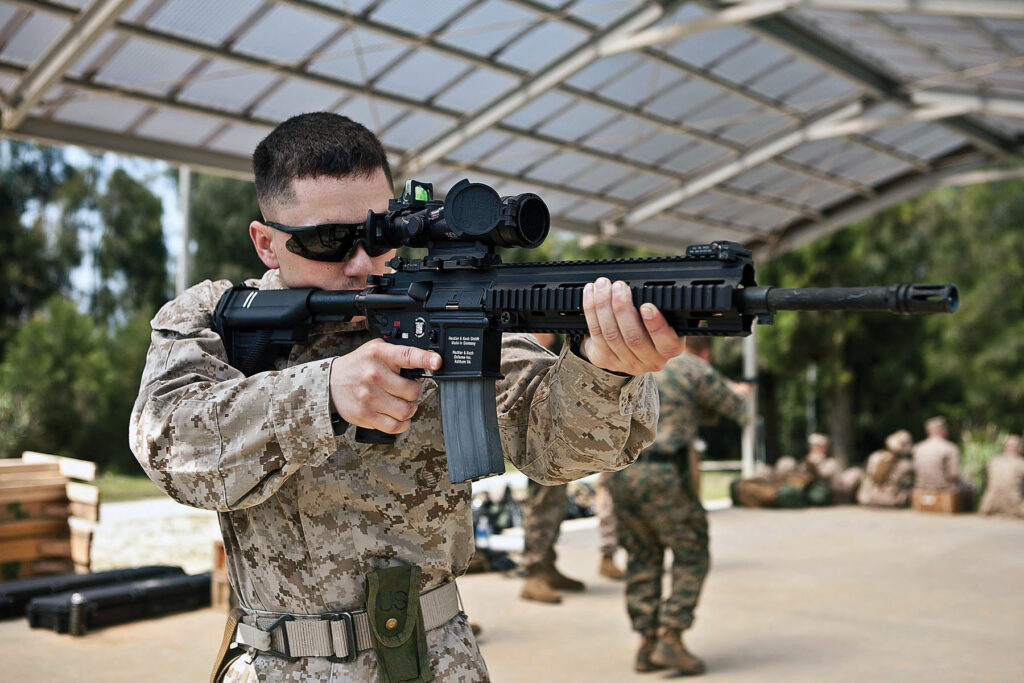Mattis Upguns Infantry: Task Force To Invest Over $1B
Posted on

Then-Lt. Gen. James Mattis talks to a wounded servicemember in Iraq.
PENTAGON: Defense Secretary Jim Mattis, a former Marine Corps rifle platoon leader, wants better technology and training to keep frontline foot troops alive.
He sent a Feb. 8 memo (below) to the Joint Chiefs, service chiefs, combatant commanders, and other top officials to create a Close Combat Lethality Task Force, applying the kind of top-level Pentagon focus on ordinary infantry usually reserved for jet fighters. Several sources tell us large investments are on the way for everything from night vision to body armor, a new rifle to replace the M16/M4 family, and frontline cyber/electronic warfare, with over a billion dollars in the “initial” phase alone.


The heart of the memo:
“I am committed to improving the combat preparedness, lethality, survivability, and resiliency of our Nation’s ground close combat formations. These formations have historically accounted for almost 90 percent of our casualties and yet our personnel policies, advances in training methods, and equipment have not kept pace with changes in available technology, human factors science, and talent management best practices.
“During 2017, the Department’s Cost Assessment and Program Evaluation (CAPE) office conducted a Close Combat Strategic Portfolio Review to identify the most promising investment opportunities to improve our close combat effectiveness and survivability. Our close combat formations will soon benefit from these investments.”
CAPE’s involvement is a sign of how serious this is. They’re the Pentagon’s elite analysts who often challenge the armed services on their balance of weapons and just how much a new weapons system will or does cost.

Robert Wilkie
CAPE has handed over leadership of the effort to the undersecretary of defense for personnel and readiness, Robert Wilkie. The day-to-day staff director will be a retired Marine officer now in the Senior Executive Service, Joseph L’Etoile. The Joint Staff, Army, Marines, and Special Operations Command will all contribute personnel. The official organization chart, mission statement, and objectives aren’t due in to Mattis until Feb. 23.
Undersecretary Wilkie made the only previous public mention of the task force we can find, to Military Times. He told them it would improve teambuilding — what the military calls unit cohesion — by keeping unit members together longer, rather than rotating them from base to base every few years. The Pentagon’s dysfunctional personnel policies have long hindered military effectiveness, and that they’re in question suggests how broad the task force’s mandate will be.
On the equipment side, meanwhile, the task force will look at issues that go beyond the infantry but intimately affect its fate. That includes battlefield anti-aircraft systems (Short-Range Air Defense or SHORAD) to defeat enemy drones, which, in the hands of the Islamic State, have threatened America’s 65-year-old dominance of the air. (The last American killed by an enemy airstrike was in 1953 in Korea). The task force will also study small ground robots and drones — including kamikaze armed ones called “loitering munitions” — that can provide the infantry with on-call reconnaissance and fire support. It’ll even look at how frontline units can handle social media and cyberspace.

A Marine checks out the M27 Infantry Automatic Rifle (IAR)
The most contentious part of the portfolio is probably replacing the M16, whose killing power and reliability have been hotly debated since its disastrous early days in Vietnam. It’s not clear how the task force will interact with existing service initiatives. While the Marines are moving ahead with wide fielding of the M27, a longer-ranged rifle in the same small caliber (5.56 mm), the Army has decided the M27 isn’t a big enough advancement and wants to field an all-new Next Generation Squad Weapon starting in five years. (Skeptics will note the Army killed earlier small arms programs on similar grounds and soldiers are still stuck with the M16 and its carbine version, the M4). Mattis probably won’t tell the Marines to slow down but he may want the Army to speed up.
Meanwhile, Special Operations Command already uses a wide range of non-standard small arms, albeit in relatively small numbers. SOCOM’s also exploring a suit of Iron Man/Starship Troopers-style powered armor called TALOS. No word on whether this too will be looked at by the task force.
Subscribe to our newsletter
Promotions, new products and sales. Directly to your inbox.
